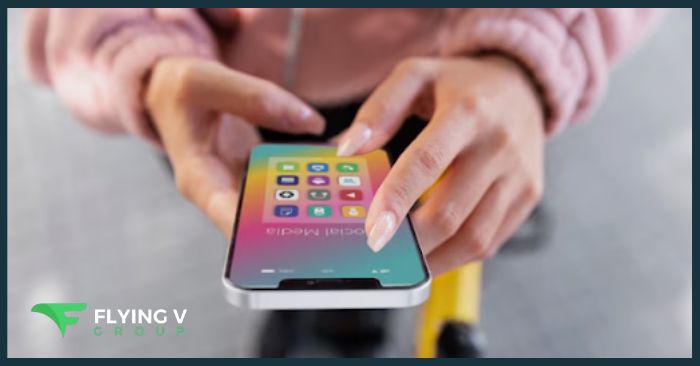Building a mobile app is only half the battle – marketing it is the other half that decides whether your app becomes the next big thing or gets lost in the app store abyss. Pre-launch marketing isn’t just about building hype; it’s about creating a solid foundation that positions your app for long-term success. That’s why smart App Marketing strategies need to begin before your app ever hits the store.
Pre-launch is your chance to generate anticipation, capture early users, and fine-tune your messaging. If you’re not taking this phase seriously, you’re already behind. In this guide, we’ll dive into the most effective ways to market your app before it launches so that you’re not starting from zero.
The Essentials of Pre-Launch App Marketing
There’s no single way to prepare an app for launch. Instead, think of it as a puzzle – each piece is crucial to completing the picture. You’ll need a strategy that balances branding, user research, technical prep, and community engagement.
Below is a high-level checklist of what to consider in your pre-launch efforts:
- define your unique value proposition (UVP) – consider what makes your app different;
- identify your target audience – decide who exactly your app is for;
- create a landing page – capture emails and build early interest;
- build a social media presence – choose the platforms where your users hang out;
- develop an email list – send updates, teasers, and beta invitations;
- start content marketing – blogs, videos, infographics – whatever resonates with your niche;
- run pre-launch ads – generate buzz and gather data;
- engage in beta testing – collect feedback and testimonials from real users;
- get early reviews/testimonials – build credibility from day one;
- track analytics – monitor what’s working and pivot as needed.
Now, let’s dig deeper into some of the strategies that can make your pre-launch campaign a success.
Crafting a Narrative That Sells
Storytelling isn’t fluff – it’s strategy. Your brand’s narrative should make users feel something before they even download your app. You want potential users to believe in what you’re building. The more emotionally invested they are, the more likely they are to convert.
Start by identifying the core problem your app solves. Instead of simply promoting features, frame your app as a hero in the user’s journey. Think about these questions:
- what transformation does your user experience because of your app?
- how does your app change their routine, improve their productivity, or make them feel?
Once you’ve established your story, weave it into every single touchpoint – your landing page copy, app description, social media content, and even the onboarding process. Consistency builds trust.
Leverage Beta Testing as a Marketing Tool
Beta testing isn’t just about fixing bugs; it’s a powerful promotional tactic. Giving early access to a select group creates a sense of exclusivity. If done right, these users become your app’s first evangelists.
Here’s how to turn beta testing into a full-blown marketing opportunity.
Build anticipation with a waitlist
Start by inviting users to join a waitlist. This can be as simple as an email capture form on your website. Add scarcity with copy like “Limited beta slots available” or “Early access for the first 500 sign-ups.” This creates urgency and makes users feel like they’re getting access to something exclusive.
Once the waitlist is live, keep those users engaged. Send periodic email updates about progress, sneak peeks at features, or behind-the-scenes content. This keeps your app top-of-mind and builds trust, so when the launch happens, your list is warm and ready – not cold and unresponsive.
Use feedback to improve – and promote
Encourage beta testers to provide honest feedback and testimonials. Not only does this help with development, but you can also use these reviews in marketing materials. Positive quotes can be repurposed for your landing page, App Store listing, and social media content to add real-user credibility.
Make it easy to leave feedback by integrating forms or surveys into the app itself. Let testers know their input is valuable by responding to suggestions and showing changes that came directly from their insights. This level of transparency helps users feel invested in your success.
Create a private community
Whether it’s a Slack group, Discord server, or private Facebook group, give your beta testers a home. This community builds loyalty and creates opportunities for viral word-of-mouth promotion. It’s also an excellent space to share updates, collect informal feedback, and gauge sentiment around new features.
More importantly, it creates a direct line between you and your users. You can test messaging, crowdsource ideas, and identify your most passionate early supporters. Over time, this core group can evolve into brand ambassadors who help you scale your marketing organically.
Reward early advocates
Offer perks for sharing the app or inviting friends – discounts, unlockable features, or badges. These small gestures turn casual users into loyal promoters. Think of it as planting the seeds of organic growth: when users feel like they’re part of something special and being recognized for it, they’re much more likely to share your app with their network.
You can go even further by gamifying your referral system. Add a leaderboard, progress tracker, or a tiered rewards structure where users unlock bigger perks the more people they bring in. Highlight top advocates publicly (with their permission) to boost their status and encourage friendly competition. This approach creates a snowball effect where promotion feels fun, social, and rewarding.
Fine-Tuning Your App Store Presence in Advance
Your app’s store presence is your storefront – and you wouldn’t launch a store without making sure it looks amazing, right?
Here’s what you should prepare ahead of time:
- App name and subtitle – make sure it’s not just catchy but also optimized for relevant keywords. The right title can boost your discoverability.
- App icon and screenshots – visuals are everything. Invest in design. Screenshots should tell a story: what your app does, how it looks, and why people should care.
- Description with SEO in mind – your app’s description should sell and be searchable. Use keywords wisely without making it sound robotic. Speak to benefits over features.
- Localization strategy – if you’re launching globally, localize your listing for multiple languages. This shows users you care and improves conversion in those regions.
At this point, partnering with an app marketing specialist can make a major difference. Companies like RadASO specialize in optimizing app store presence through keyword research, creative asset optimization, and A/B testing. With their help, your app doesn’t just exist in the app store – it stands out.
Influencer and Community Outreach That Converts
Building community before launch may seem like a tall order, but it’s one of the smartest moves you can make. You want real people talking about your app before it’s even live.
Here’s how to make that happen:
Micro-influencers – Celebrities
Big names might give you exposure, but micro-influencers tend to drive better engagement. Their audiences trust them more and are usually more niche-specific.
Target niche communities
Reddit, Discord servers, Slack channels, Facebook groups – go where your target users already hang out. Share your journey, ask for feedback, and build in public.
Run referral and sharing incentives
Use tools like early access codes, gamified leaderboards, or even simple giveaways. The goal is to make sharing the app feel rewarding.
And remember: this is less about selling and more about participating. Be authentic, respond to comments, and show genuine interest in your users.
Measuring and Iterating for Better Launch Results
Don’t just “hope” your app will perform well at launch – test it. The more data you collect beforehand, the better your chances of succeeding when the floodgates open.
Here are a few key metrics to track in the pre-launch phase:
- email sign-ups – a strong email list is a great predictor of launch success;
- click-through rates (CTR) – for pre-launch ads or landing pages;
- engagement rates – on social media or community platforms;
- app interest level – use polls, surveys, and direct feedback to gauge excitement;
- app Store listing previews – A/B test different screenshots, titles, and descriptions (you can use tools for this even before you officially launch).
Using this information, you can adapt your strategy in real-time. Maybe your current ad creative isn’t converting – change it. Maybe your value proposition isn’t clear – rewrite it.
This agile approach prevents wasting time or money, and it ensures you’re building something people want.
Conclusion
Launching an app isn’t just a product milestone – it’s a marketing moment. How you prepare before that moment can make or break your app’s trajectory.
From storytelling and community building to influencer outreach and App Store Optimization, each piece of your pre-launch puzzle must be carefully planned and executed. These efforts don’t just generate early buzz – they create momentum that compounds over time.
If you’re serious about winning in the mobile app space, don’t leave marketing as an afterthought. Start before you launch. Stay agile. Stay connected to your users.
Need expert help? RadASO is a great partner to consider when it comes to making your app shine in the crowded app marketplace. They offer professional App Store Optimization services that can help boost your visibility, get more organic downloads, and make your app stand out right from day one.






0 Comments